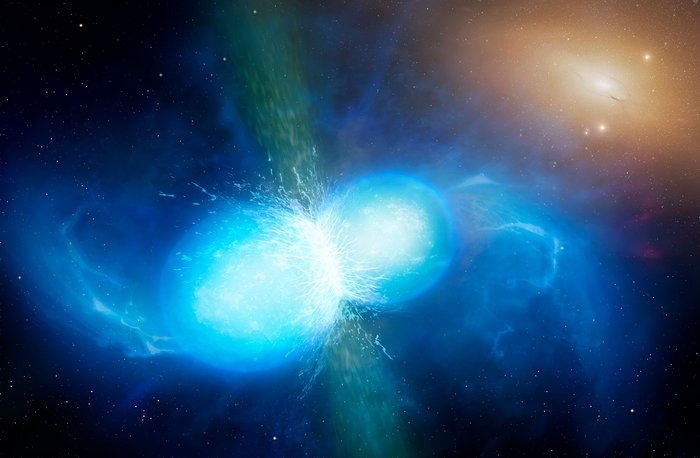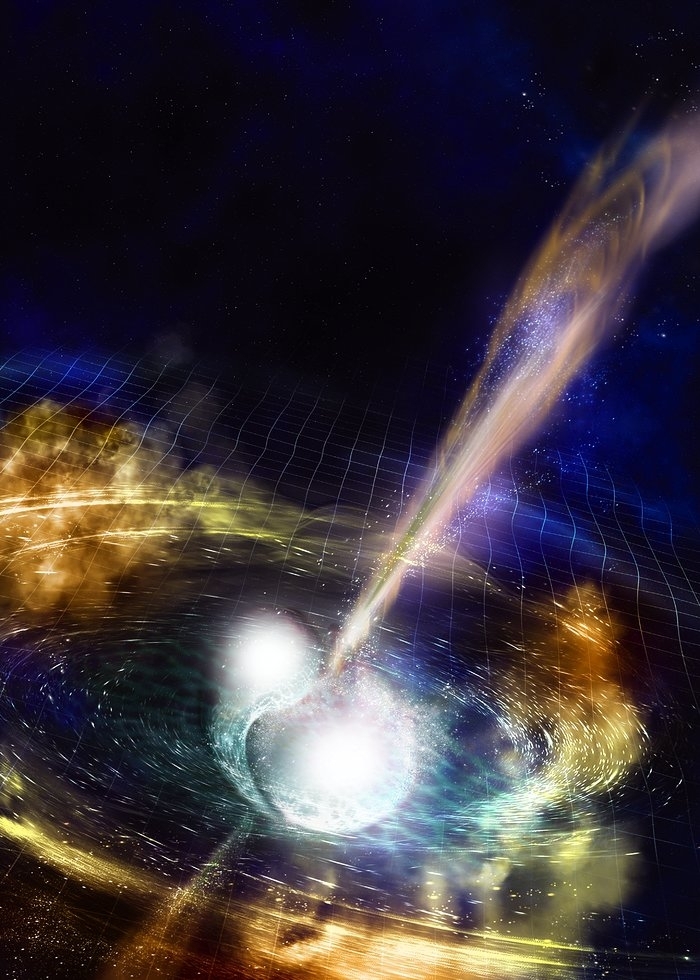Kilonova: Light from gravitational wave source detected shooting out gold and platinum into space
The historic observations indicate the first-ever confirmed observation of a long-predicted type of nova called the kilonova.
For the first time ever, astronomers have successfully detected both gravitational waves and light from the same astronomical event, which has been dubbed GW170817. The historic observations indicate the first-ever confirmed observation of a long-predicted type of nova called the kilonova.
According to scientists such a unique event is caused by a merger of two neutron stars and the aftermath of such an event is the kilonova, which scatters heavy elements such as gold and platinum across the Universe.
Gravitational waves are essentially ripples in spacetime created by moving masses. However, only the most intense gravitational waves created by incredibly rapid changes in the speed of massive objects can currently be detected. The merging of neutron stars is just such an event large enough to be observable. Despite Einstein having predicted gravitational waves 100 years ago, scientists first detected it in 2015. Since then the waves have been detected four times, making this the fifth time that such a cataclysmic event was observable.
The historic event was detected thanks to a global scientific collaboration, using an array of the ESO's (European Southern Observatory) telescopes in Chile. The gravitational wave passing the Earth was discovered on 17 August by Ligo (Laser Interferometer Gravitational-Wave Observatory) in the US and the Virgo Inferometer in Italy. Merely two seconds later, Nasa's Fermi Gamma-ray Space Telescope and ESA's INTErnational Gamma Ray Astrophysics Laboratory (Integral) detected a short gamma-ray burst from the very same astronomical event.
The extraordinary discovery has been published in several research papers in Nature and other journals, according to the ESO. The discovery also offers the strongest evidence yet of the theory that short gamma-ray bursts are caused by mergers of neutron stars. The observations from GW170817 also boosts hopes that this unique object was indeed the kilonova — which is a massive explosive event and around 1,000 times brighter than a traditional nova.
"There are rare occasions when a scientist has the chance to witness a new era at its beginning," Elena Pian, astronomer with INAF, Italy, and lead author of one of the Nature papers, said in a statement. "This is one such time!"
"The data we have so far are an amazingly close match to theory. It is a triumph for the theorists, a confirmation that the Ligo–Virgo events are absolutely real, and an achievement for ESO to have gathered such an astonishing data set on the kilonova," adds Stefano Covino, lead author of one of the Nature Astronomy papers.
Scientists estimate that the event occurred around 130 million light years away, making it the closest gravitational wave event and one of the closest gamma-ray burst sources ever seen. According to the ESO, after the merger of the two neutron stars, a burst of rapidly expanding heavy radioactive elements from the kilonova scattered outward moving as fast as one-fifth the speed of light. Over the next few days, the kilonova's colour changed from "very blue" to "very red" faster than ever seen before in any other stellar explosion.




"When the spectrum appeared on our screens I realised that this was the most unusual transient event I'd ever seen," said Stephen Smartt, who led observations with ESO's NTT as part of the extended Public ESO Spectroscopic Survey of Transient Objects (ePESSTO) observing programme. "I had never seen anything like it. Our data, along with data from other groups, proved to everyone that this was not a supernova or a foreground variable star, but was something quite remarkable."
"We have entered a new era of multi-messenger astronomy!" said Andrew Levan, lead author of one of the papers, commenting on ESO's ability to handle major, complex astronomical projects at short notice.
This year, three American physicists, Rainer Weiss, Kip S Thorne and Barry C Barish, members of the Ligo project who played a key role in the observation of gravitational waves, were awarded the Noble Prize. Scientists hope that the observation of these cataclysmic events will revolutionise mankind's understanding of the universe.






















